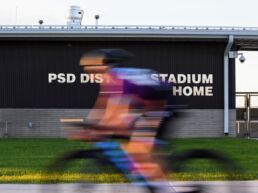
Written by, Dr. Matthew Skrdla
We have all heard ‘The Eyes Lead the Body’. Precise vision and visual skills become even more critical at high speed. Want to ride fast, and safe? Read on…
Most often we think of clear vision as 20/20 visual acuity measured on a stationary eye chart. While 20/20 vision is important, for a dynamic sport like cycling it is merely a starting point. The visual demands of a high speed sport are much more involved.
Research specific to road cycling out of McMaster University in Hamilton, Canada, reports that there are three critical vision skills for safe cycling: 1) Dynamic Visual Acuity; 2) Visual Information Processing (specifically the speed of processing); and 3) Peripheral Awareness.
Dynamic Visual Acuity is the ability to determine the details of an object in motion. While cycling, the cyclist is the object in motion both horizontally (desired motion) and vertically (bouncing railroad tracks). While riding, we rely on Dynamic Visual Acuity to tell us how fast we are going, or how close we are to the wheel in front of us. Pretty important asset for safe pack riding!
Visual Information Processing is the ability to process what your eyes are seeing with Dynamic Visual Acuity. Safe cycling requires the athlete to process visual information and execute an appropriate motor response. An example of this on the road bike is interpreting how deep a pothole is, how fast you are coming up to it, and what’s the safest route for navigating around it while directing those you are riding with to do the same. That’s a lot going on in a very short time!
Peripheral Awareness (not to be confused with peripheral vision) is a critical skill to develop for safe group riding and racing. Peripheral Awareness is essential to improving anticipation and reaction speed as it is the body’s first way of sending messages of moving objects to our brain for Visual Processing. Coach Chris Carmichael has observed that;
“Professional cyclists try to keep as broad a view as possible and are always looking up the road. Instead of focusing on the one thing ahead of them, they rely on peripheral awareness to search for dangers from the sides and looking about 15 to 30 riders ahead of them in order to anticipate corners, obstacles and changes in speed. Novices tend to focus too tightly. They look at the wheel right in front of them and that’s dangerous because by the time the rider in front of you hits the brakes or swerves to miss a pothole, it’s often too late for you to do the same.”
Going back to the pothole analogy, Peripheral Awareness is keeping an eye on the pack, being aware of the cyclist 4 riders ahead pointing out a hole, predicting how the 3 in front of you will react to the hole as well as the guy beside you, and how you are going to react in a safe manner so that you do not take out the guy behind you. All of that has to happen in the ‘blink of an eye’!
All 3 skills can be improved with practice and being aware of the skill set you need to improve.
So, do you still want to ride fast and safe? Improve your visual skills!
In coming articles, I will explain simple exercises you can do to improve each skill.
Dr. Matthew Skrdla
(Dr. Skrdla is a proud supporter of YGR and cycling in Fort Collins and Northern Colorado. When he’s not seeing patients or spending time with his family, you will find him on his bike with a smile on his face!)






